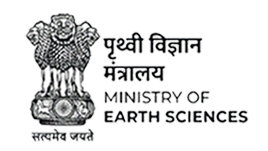









| Abstract Submission No. | ABS-06-0336 |
| Title of Abstract | Estimation of nutrient flux using LOICZ model: A case study of the Mahanadi estuary |
| Authors | Susmita Raulo*, Sanjiba Kumar Baliarsingh, Alakes Samanta, Aneesh A. Lotliker, Tamoghna Acharyya, Sudheer Joseph, Balakrishnan Nair, T.M |
| Organisation | Indian National Centre for Ocean Information Services |
| Address | Indian National Centre for Ocean Information Services Hyderabad, Telangana, India Pincode: 500090 E-mail: s.raulo-p@incois.gov.in |
| Country | India |
| Presentation | Oral |
| Abstract | The present study addresses inorganic macronutrient flux in a river-sea continuum of the Mahanadi and the western Bay of Bengal. Spatial variability of different physico-chemical parameters, viz. salinity, temperature, and nutrients, were investigated over a tidal cycle during February 2021 (post-southwest monsoon and low flow period). The nutrient budget was estimated using LOICZ (Land-Ocean Interactions in the Coastal Zone) model with the spatial data from the stations of upstream, estuary, and nearshore waters for a better understanding of the nutrient pathways, health, and functioning of the ecosystem. The biogeochemical mass balance simple box and layer model was used to estimate the water, salinity, and nutrient flux between upstream-downstream-adjacent coastal water. The results revealed very low (<1 day) residence time of water mass, both at upstream and downstream. The residence time also varied with the tidal cycle, which was relatively higher during low tide and lower during high tide. The nutrient budget revealed upstream as the major source of the nutrients (mostly DIP), probably sourced from the industrial effluent discharge. The +ve ΔDIN and ΔDIP represented the upstream as a source, whereas żve ΔDIN and ΔDIP represented the downstream as a sink. The net ecosystem metabolism (NEM) was mostly positive at downstream, which implies the autotrophic condition of the ecosystem. On the contrary, the NEM was negative at upstream, representing the system as heterotrophic. The evaluation from the LOICZ model highlighted that nitrogen fixation prevailed over the denitrification at downstream due to the high metabolic activity and lower nitrogen fixation values than the denitrification at upstream due to the less metabolic activity. The overall result represented a healthy estuarine condition. The autotrophic condition in downstream of the estuary signified efficient utilization of nutrients resulting in relatively less probability of eutrophication in the coastal waters. |
| Keywords | Salinity,Mahanadi,Bay of Bengal,Flux,LOICZ |
| For Awards | yes |